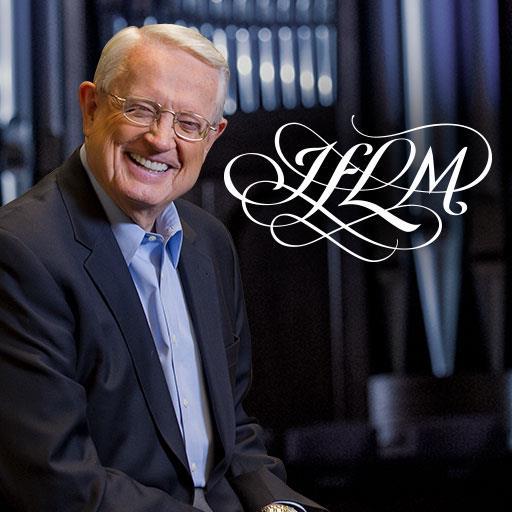Just how widespread is the practice of abortion? Are we making much ado about nothing, or do we have a full-scale issue deserving of our immediate attention?
To begin with, let’s understand that medical authorities determine a person to be “alive” if there is either a detectable heartbeat or brain-wave activity. With that in mind, it is eye-opening for some to realize that unborn children have detectable heartbeats at 18 days (two and one-half weeks) after conception and detectable brain-wave activity 40 days (a little over five and one-half weeks) after conception. What is so shocking is that essentially 100 percent of all abortions occur after the seventh week of pregnancy.
Why are children aborted? The Alan Guttmacher Institute (the research arm of Planned Parenthood) states:
- 1 percent are victims of incest or rape
- 1 percent had fetal abnormalities
- 4 percent had a doctor who said their health would worsen if they continued the pregnancy
- 50 percent said they didn’t want to be a single parent or they had problems in current relationships
- 66 percent stated they could not afford a child
- 75 percent said the child would interfere with their lives.
When are children aborted? Fifty percent of all abortions are performed at eight weeks; 25 percent at nine to ten weeks; 14 percent at eleven to twelve weeks; 5 percent at thirteen to fifteen weeks; 4 percent at sixteen to twenty weeks; and 2 percent after twenty weeks.
How many children are aborted? If you are an American citizen, no doubt your greatest interest is in your own nation. Let me break the abortions down to a national statistic: 1,600,000 babies are aborted in these United States every year. Per day, that’s 4,383; per hour, it’s 183; per minute, 3. That’s correct—in America alone 3 children are killed every minute.
I can hear a few passionate pro-life activists urging me to turn to the verse that says, “Thou shalt not get an abortion,” so everyone will understand that the issue, so far as the Bible goes, is a slam-dunk. There is no such verse. Since that is true, we must search for principles in God’s timeless Word that assist us in coming to correct conclusions. By thinking through the logic or, if I may, the syllogism of logic in the Scriptures, we are often able to arrive at positions that are virtually airtight.
The first chapter of Genesis is the account of God’s creative actions as He originated all things. In Genesis 1:26 we read the words of the Godhead, speaking together, “Let Us make man in Our image.” Never before has such a statement appeared in Scripture, nor will it ever appear related to animal, plant or any other life, including life that might be in the planetary spaces. This is limited to human life. Only human life—by God’s design—possesses the image of God.
It should not surprise us, then, when we turn to Exodus 20:13 and read, “You shall not murder.” Why? Because there is something distinctly precious and unique about human life. In God’s estimation, it is so precious and unique He commands that it must be protected and preserved. It alone represents “the image of God.” This precious human life is not to be treated violently by other human beings.
The psalmist states it clearly.
What is man that You take thought of him,
And the son of man that You care for him?
Yet You have made him a little lower than God,
And You crown him with glory and majesty! (Psalm 8:4-5)
Elsewhere, the psalmist writes that the Lord has been his God forever, even from his mother’s womb:
Yet Thou art He who brought me forth from the womb;
You made me trust when upon my mother’s breast.
Upon You I was cast from birth;
You have been my God from my mother’s womb.
(Psalm 22:9-10)
Look closely at those words. David is seeing himself within the womb and coming forth from it as being answerable to the God who created him and developed him during the nine months he was within the womb.
Did you know that the sin nature within the heart of human beings is present even within the life of the child in the womb? In Psalm 51:5 David says, “Behold, I was brought forth in iniquity, / And in sin my mother conceived me.” Some would read that and think, Sounds to me like the act of sexual intercourse, the cause of his conception, was sinful. No, that is not what he meant. The Amplified Bible helps: “Behold, I was brought forth in [a state of] iniquity; my mother was sinful who conceived me [and I, too, am sinful].”
Even in an embryonic or fetal state there was this sense of God’s hand and God’s accountability in the psalmist’s life. This is vividly illustrated in the most eloquent passage supporting life in the womb in all the Old Testament: the central section of Psalm 139. I’m referring to verses 13-16. His word picture describes the internal network of tiny organs that were formed by the Creator while the psalmist was in the womb of his mother.
Moving into the New Testament, we come to the story of the Lord Jesus’ birth (Matthew 1:18-20). Luke later mentions that what was being formed in Mary, the mother of Jesus, was “the holy offspring” (Luke 1:35), not mere “fetal tissues.” And when Mary later stands before her relative Elizabeth and informs her that she is pregnant, do you remember what occurred within Elizabeth, who was also pregnant? “The baby leaped in her womb” (Luke 1:41). Blobs don’t leap, nor do tissues and tumors . . . only life leaps!
Whether or not the mother-to-be planned or expected to be pregnant (Mary certainly didn’t) she is carrying a life within her that has as much right to live before birth as the child does after birth.
Almost without exception today, the major part of the argument is that the woman’s rights take over or have precedence over the life within her, as though she were solely responsible for the conception of life within her. She is not . . . not really. How often couples will have sexual relations again and again with or without the use of contraceptives—but there is no conception. And then one day God sovereignly causes life to be conceived. The couple can no more say they had the creative powers to begin that life within the woman than they can say they have the final authority to end it.
Well, you may be thinking, what if her life is in danger? C. Everett Koop, M.D., formerly the Surgeon General, states that during his 35-plus years of practicing medicine, “Never once did a case come across my practice where abortion was necessary to save a mother’s life.” As we saw earlier in the statistics, the percentage of such cases is so small, it is of negligible concern for the use of argument.
I think the best way to communicate my passion for this whole issue of the sanctity of life is with this true story.
A couple married during the Great Depression. Long before their fourth anniversary, the mother conceived her third child, even though they were using contraceptives. The other two children were still in diapers. However the woman and her husband were convinced that they should accept whatever God sovereignly had planned for them. Sacrificially, they chose to have that baby—a boy.
I’m so grateful that they did, because I was that baby, my mother and father’s last child. Our family came to know a joy in family life that the five of us would otherwise never have known. Little did anyone realize back then what God’s plan for me would be. Today, all three of my parents’ children are engaged in vocational Christian service.
I am more grateful than I can describe that my mother and father, both now deceased, agreed: “We’ll have you, because we believe God is greater than our plans and our rights. We believe God’s plan, though mysterious, is far more magnificent and important than a few inconveniences.” Because they thought those thoughts many years ago, I am able to write these things today.
Adapted from Charles R. Swindoll, Sanctity of Life: The Inescapable Issue (Nashville: Word Publishing, 1990). Copyright © 1990 by Charles R. Swindoll, Inc. All rights reserved worldwide.
About the author
Pastor Chuck Swindoll
Pastor Chuck Swindoll has devoted his life to the accurate, practical teaching and application of God’s Word. Since 1998, he has served as the senior pastor-teacher of Stonebriar Community Church in Frisco, Texas, but Chuck’s listening audience extends beyond a local church body. As a leading program in Christian broadcasting since 1979, Insight for Living airs around the world. Chuck’s leadership as president and now chancellor of Dallas Theological Seminary has helped prepare and equip a new generation for ministry.
More articles by Pastor Chuck Swindoll







